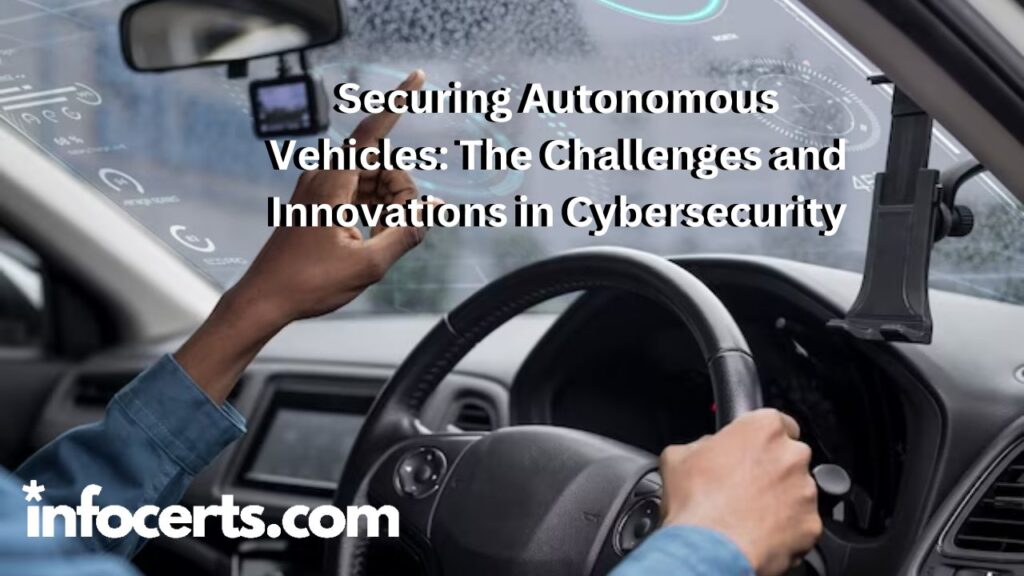As , Autonomous vehicle cybersecurity continue to revolutionize the automotive industry, they bring unparalleled convenience and efficiency. However, with advanced technology comes increased vulnerability to cyber threats, highlighting the need for robust Cybersecurity measures. Red teaming, a proactive approach to cybersecurity testing, in combination with the expertise of Certified Ethical Hackers (CEH), presents an effective strategy to identify and address potential vulnerabilities. In this blog post, we will explore the challenges faced in securing autonomous vehicles and the step-by-step approach to conducting a red teaming exercise with CEH for ultimate protection.
Challenges in Securing Autonomous Vehicles
Autonomous vehicle cybersecurity rely heavily on complex software and interconnected systems to function seamlessly. This complexity creates a multitude of challenges for cybersecurity:
- Cyber-Physical Risks: Attacks on autonomous vehicles can have real-world consequences, potentially endangering lives and property.
- Data Privacy Concerns: Vehicles gather vast amounts of sensitive data, requiring robust Protection Against Data breaches and unauthorized access.
- Software Vulnerabilities: Complex software codes are susceptible to exploitation, leading to system manipulation and unauthorized control of vehicles.
- Supply Chain Vulnerabilities: With components sourced from various manufacturers, the supply chain becomes a potential entry point for attackers.
Red Teaming with CEH: A Step-by-Step Approach
- Scoping: Define the scope of the Red Teaming exercise, specifying the systems, networks, and potential threat scenarios to be tested.
- Reconnaissance: CEH experts conduct in-depth research to gather information on the target system, mimicking the tactics of potential attackers.
- Threat Modeling: Identify potential threats and vulnerabilities, prioritizing high-risk areas for further examination.
- Exploitation: Attempt to breach the system using simulated attacks, employing various techniques like phishing, ransomware, and code exploitation.
- Post-Exploitation: Analyze the success of simulated attacks and assess the extent of the potential damage.
- Reporting: Compile a comprehensive report outlining the findings, including discovered vulnerabilities and recommended mitigation strategies.
- Remediation: Work collaboratively to address and patch the identified weaknesses, enhancing the system’s overall security.
- Validation: Reevaluate the system’s security post-remediation to ensure that vulnerabilities have been effectively resolved.
| Challenges in Securing Autonomous Vehicles | Solutions with Red Teaming and CEH |
| Cyber-Physical Risks | Proactive testing for real-world consequences |
| Data Privacy Concerns | Robust protection against data breaches |
| Software Vulnerabilities | Advanced techniques for code exploitation |
| Supply Chain Vulnerabilities | In-depth analysis of potential entry points |
Conclusion
Securing autonomous vehicles is an ongoing challenge, but proactive measures like red teaming with CEH can significantly enhance cybersecurity. By adopting this step-by-step approach, automotive manufacturers and developers can stay ahead of potential cyber threats and protect both their users and their brand reputation. As technology advances, a dynamic and adaptable cybersecurity strategy will be crucial in safeguarding the future of autonomous vehicles. Through collaboration, innovation, and vigilance, we can embrace the transformative potential of autonomous vehicles while ensuring a safe and secure driving experience for everyone.
——————————————————————————————————————–
Infocerts, 5B 306 Riverside Greens, Panvel, Raigad 410206 Maharashtra, India
Contact us – https://www.infocerts.com

